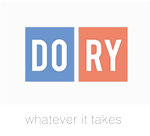Computers Make Production Easier
Montreal native Donna McCarthy worked at Chiat Day, Taxi, Bensimon Byrne and Target Marketing in Newfoundland before opening Dory Advertising in 2004. Her agency’s client list includes Sobeys, Memorial University and Oxfam. The creative director has amassed a string of awards and accolades in her career, including six Cannes Lions and Best of Show honours at Ice Awards, Crystals, Marketing Awards and London International awards. A judge at the 2010 Cassies in Canada, she spends most of her time in Halifax. She spoke with the Financial Post’s Hollie Shaw about how the Internet has irrevocably changed the advertising business.
Q What emerging trend is the most exciting to you right now?
A I think that the curtain has been pulled back to reveal the ‘ad wizards.’ Clients and consumers understand that to produce a great TV spot requires little more than a creative teenager, a camcorder and a laptop. A majority of the most viewed spots on YouTube are home grown. That’s changing the way we all create and produce ads. And it’s changing the amount of money smart clients are willing to pay for ads.
Q You have said agencies do not need to charge very much to do quality advertising nowadays. How have you followed this philosophy at Dory?
A It’s not surprising that agencies are still justifying hefty production budgets. But unless the idea calls for Betty White or a helicopter shot over Labrador, that’s getting harder to do; clients are smarter than that. Many of them have kids creating really interesting spots on their laptops. Computers have made production so much easier. The Internet has made the whole process a lot more affordable. And agency overhead, for many of us, doesn’t exist. Jay Chiat’s 1988 vision of a virtual ad agency has been realized. Many agencies have gone virtual, which also keeps costs down. Dory is as virtual as an agency can be. But the work hasn’t suffered. We recently received the only gold in Canada at the London International Awards for a radio campaign that, all together, cost less than $5,000. And that includes all talent costs for four spots, concepts, revisions, music, account management and production. We continue to win golds at national and international shows. Yet Dory is, on average, one-tenth of the price of other shops. It’s more fun when you’re not stealing– that goes for ideas and for money.
Q How do you define good advertising?
A A good ad is one that gets noticed, wins the argument, is liked by the target group, and is remembered by the product name.
Q What was your favourite campaign of 2010?
A Old Spice. I love the TV spots and I especially love the way Old Spice infiltrated social media. It’s a nice case study.
Q Is it harder to reach consumers than it used to be?
A It depends on your target. If you’re advertising to fiftysomethings who only listen to the CBC, then it can be tricky, but most people are on the Internet and watch some TV, listen to some radio, drive cars, read newspapers and ride on buses. So, from a creative point of view, it might be easier. Great ideas get passed around now and that’s a new phenomenon. Whereas before all you had to do was outspend the competition, the new marketplace dictates that your ideas must be relevant and if they happen to be crazy funny, or sad, or interesting, or if your price is really low, you get all this free media. Kids and young adults used to go outside more and now they’re all glued to some form of media every waking hour. I think it’s easier to get to the target because, generally speaking, they want you to. They want to be the first person who emails the new Snickers ad to their friends.
Q How much faith do you place in consumer research, such as focus groups?
A Well, focus groups picked Dan Quayle. And, great TV shows like The Mary Tyler Moore Show, Seinfeld and All in the Family would have never seen the light of day if the networks listened to the focus groups. And remember focus groups also loved New Coke. I think there’s something to be said for gut feeling, especially when it comes to judging creative. Perhaps the most relevant and compelling product benefit–faster, longer lasting, shinier, more erect–can be discovered in focus groups, but the way those benefits are served up as creative executions, in my humble opinion, are best left for the agency and the client to decide.
Q You do national radio spots for Sobeys. How are you able to keep up with the market-to-market needs when you are doing 500 to 600 spots a year?
A It’s a funny old world down here in Atlantic Canada. You wear a lot of hats, which helps with the efficiency. So we all write and produce and account manage and star in the ads. And we make our own sandwiches. The best part about Sobeys is that the regional marketing managers are thinkers and fast responders. They know what they want and they communicate their needs and understand that, because it’s retail, they have to be able to approve creative quickly. Every region has put someone in charge of approvals, and those are the people I deal with directly. Whether it’s Atlantic or Ontario or Western Canada, these managers make sure that the messages are relevant to their particular region. I think the reason we are able to do so many ads and, as you said, continue to address market-to-market needs is because Sobeys have eliminated the committees, and trust smart individuals to make the right choices.
hshaw@nationalpost.com

